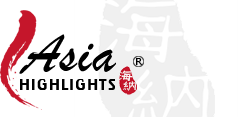The French colonial period in Vietnam officially began in 1887, when Vietnam was referred to as French Indochina. It lasted until 1954, with a break between 1941 and 1945, when the Japanese took over during World War 2.
Even though relative to its long history, Vietnam was under the French only for a short period during the 19th and 20th centuries, there is a distinct and significant French legacy you can witness even now.
You will find the French legacy in Vietnam to be unique among colonial legacies in the countries of Southeast Asia, in terms of language, architecture, and especially food.
Quick Facts
- French Indochina encompassed parts of Laos and Cambodia, as well as Vietnam.
- French colonial power ended after the 9-year First Indochina War, which was followed for more than 20 years by the Vietnam War.
- Numerous colonial buildings in Hanoi and Ho Chi Minh City are still functional and well-maintained.
- There is much evidence of French influence in Vietnamese cuisine.
- The Vietnamese script was developed by a French Jesuit in the 17th century.
- There are many French loanwords in the Vietnamese language.
Discover real reviews of Highlights Travel Family's best-rated service across trusted platforms.

 
|
Vietnam & UAE FANTASTIC tour! Thank you Albee Ning!
Albee was INCREDIBLE. She arranged a 9-day private tour of both North and South Vietnam. No stone was left unturned: a private cruise up the Mekong; excellent hotel reservations; personal, caring tour guides; More
Consumer, Jun 2020
|
We traveled with Asia Highlights…
My husband and I had an absolutely wonderful 5 1/2 week trip that was organized by the exceptional Ruby Zhao. We have traveled a lot and Ruby is the VERY BEST AGENT we have ever had! More
Lurinda Smith Barton Barnwell, Mar 2020
|
We were.very satisfied with Asia…Four Great Weeks in China and Viet Nam
Asia Highlights was very efficient at advising us on what to see and the best routes to take, but they were also very flexible in integrating our own ideas in regard of travel destinations and accommodations. More
Eva and Jim, Oct 2019
|
Vietnam Under the French
French Indochina was a colony of France, exploited for economic advantage. The French government established a near monopoly on the trade of opium, salt, and rice wine. Trading of these products was fundamental to the local economy until it started to diversify in the 1930s.
In 1930, the French began to exploit the region's natural resources more extensively. Modern-day Vietnam became a source of tea, rice, coffee, pepper, coal, zinc, and tin, while Cambodia became a source of rice and pepper. Rubber plantations in French Indochina were developed to supply the demand due to the growing automobile industry.
While Vietnam made economic progress under French rule, the progress mostly benefited the French and a small group of wealthy Vietnamese. As social discrepancies grew, land-ownership became concentrated among a small class of landlords.
There was growing resentment towards landlords, who were becoming increasingly richer. This set the scene for Vietnam's attraction to communist ideology, as nationalistic movements were aroused.
Japanese Occupation (1941-45)
The Japanese took over after the fall of France during World War 2. A Vietnamese communist army led by Ho Chi Minh rebelled against the Japanese and eventually declared independence in 1945.
After the defeat of the Japanese in 1945, there was a power struggle between Vietnamese nationalists and the French, which led to the First Indochina War.
First Indochina War
The Indochina War period between 1945 and 1954 was terribly complex, during which Vietnamese were trying to decolonize but were stuck in a stalemate with the French. Eventually the war ended when the Viet Minh successfully attacked the French airbase at Dien Bien Phu.
While this victory marked the end of French presence in Vietnam, Vietnamese were yet to gain full independence. Vietnam was yet to suffer 20 more years of conflict during the Vietnam War, before it was able to enjoy peace and begin rebuilding.
French Colonial Buildings
When you visit Vietnamese cities, you will see French architecture left behind from the French colonial period.
In Hanoi, the Hanoi Opera House, built in 1911, and the Hoa Lo Prison, built in 1896, are most prominent. On 16th August 1945, the Viet Minh announced from the balcony of Hanoi Opera House that they had taken over the city.
Now, you can enjoy high-quality theatrical performances, including traditional and contemporary dance and music, at Hanoi Opera House. Most weekends you will also see wedding couples in Hanoi being photographed on the elegant front steps of this historic building.
Now, you can enjoy high-quality theatrical performances, including traditional and contemporary dance and music, at Hanoi Opera House. Most weekends you will also see wedding couples in Hanoi being photographed on the elegant front steps of this historic building.
You can also visit Hoa Lo Prison, which is no longer a prison, but is open for visitors to see exhibits of gruesome relics of the past. Most of the relics were used in the prison during the time the Vietnamese were fighting for freedom from colonial power, up until the mid-1950s.
Ho Chi Minh City also boasts many colonial buildings, most notably: Ho Chi Minh City Opera House, Notre Dame Cathedral, Saigon Central Post Office, and Ho Chi Minh City's People's Building.
The Saigon Central Post Office still functions as a place for buying stamps and posting letters. You can send postcards to your loved ones from this magnificent vintage post office.
French Influence on the Vietnamese Language
The French had a major influence on the Vietnamese language. In fact, the current Vietnamese script, also known as the qu?c ng?, was developed by a French Jesuit missionary in the 17th century, prior to the French colonial period.
Before this, Vietnamese used a Chinese-character-based script which was very difficult to learn, which meant that literacy was not easily accessible by the masses.
The French also left their mark on the Vietnamese language via loan words and place names. Below are a few examples of loanwords from French that made it into Vietnamese vocabulary:
| Vietnamese | French | English |
|---|---|---|
| bơ | beurre | butter |
| búp bê | poup'e | doll |
| ma dam | madame | Mrs/Madam |
French Influence on Vietnamese Cuisine
While at first glance French and Vietnamese cuisine are completely different, on closer examination Vietnamese cuisine has absorbed significant French influence.
Two popular Vietnamese dishes with notable French influence are banh mi and pho. Banh mi is Vietnamese sandwich, similar in style to French baguette. Inside banh mi is filled with grilled meat, coriander, pickled vegetables, and Vietnamese pat'.
Vietnamese didn't have bread in their diet prior to the arrival of the French. Now, however, you can easily find baguettes on the streets of Vietnam. However, Vietnamese bread is different in that it is made with rice flour instead of wheat flour, giving it a distinct taste and texture.
Pho noodles, which are probably Vietnam's most popular dish, are a combination of Vietnamese rice noodles and French meat broth. The name pho may have been an appropriation of the French pot au feu or stew.
You will also find that most Vietnamese are coffee lovers, which is not a common trend in surrounding countries. Coffee-drinking became popular during French rule.
The coffee you find in Vietnam, however, is different from French coffee. The French tend to like their coffee hot and black, while the Vietnamese like their coffee cold and sweetened with condensed milk.
These are a few examples of how the Vietnamese adopted some aspects of French cuisine. There are many other examples you may come across during your exploration of Vietnam.
A good way of sampling the local food is via a food tour in the Old Quarter of Hanoi. Our tour guide can give thorough explanations and advice about the food.
Explore Asia with Asia Highlights
At Asia Highlights we offer tailor-made tours through Asia, where you can enjoy all highlights as well as amazing cultural experiences. To get started, send us an email.
Why Asia Highlights (10,000+ reviews & 98.8% 5-star rating)
- Save Your Time:
- Less research, more enjoyment!
- Real-time 1V1 expert planning
- Maximize Your Flexibility:
- Personal local guide and ride
- Explore at your own pace
- Celebrate Your Journeys:
- Specially-crafted family adventures
- Celebrate milestones with style!
Get Inspired with Some Popular Itineraries
At Asia Highlights, we create your kind of journey — your dates, your destinations, at your pace. You can have any trip tailor made for your travel.

